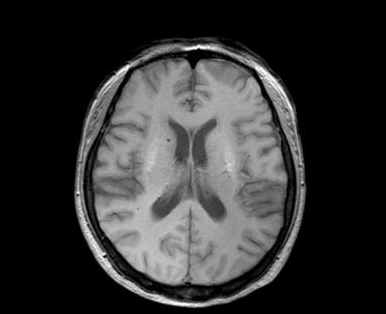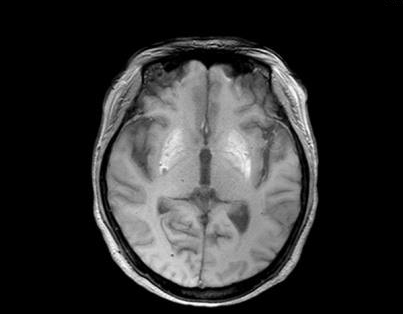Journal of Clinical & Medical Case Reports
Download PDF
Case Report
A Case of Hyperglycemic Hemichorea and Review of the Literature
Wu Q, Wang J, Shen T, Huang Y, Xiong K, Zhou X, and Luo W*
Department of Neurology and Clinical Research Center of Neurological
Disease the Second Affiliated Hospital of Soochow University, China
Address for Correspondence: Weifeng Luo, Department of Neurology and Clinical Research
Center of Neurological Disease the Second Affiliated Hospital of Soochow University, China E-mail Id: lwfwxx@126.com
Submission: 22 August, 2023
Accepted: 01 January, 2024
Published: 15 January, 2024
Copyright: © 2024 Wu Q, et al. This is an open-access article distributed under the Creative Commons Attribution License, which permits unrestricted use, distribution, and reproduction in any medium, provided the original work is properly cited.
Keywords: Hemichorea; Hyperglycemia; Ballism
Abstract
Chorea is a kind of movement disorders result from many
conditions. Hyperglycemic hemichoreais a one of them which can be
seen patients with type 2 diabetes in long-term poor glycemic control.
In this case, we reported a 58-year-old woman who presented with
involuntary movements of left limbs. Her MRI can see hyper intensity
in T1. After hypoglycemic therapy, she symptom of hemichorea got
reverse to some extent. This case is relatively rare in clinic. We reviewed
the clinical cases and discussed the possible mechanism.
Case Presentation
The patient was a 58-year-old woman presented with persistent
involuntary movements of the left upper and lower limbs. These
movements can be disappeared during sleep (Video 1). She had a
pervious history of hypertension for 3 years and was known diabetic
for 1 year. In August this year, she self-discontinued taking drugs.
Recently, her blood sugar has risen significantly. Her head CT scan
showed hyperintensity in bilateral caudate nucleus and globus
pallidus, considering the possibility of metabolic lesions. She denied
the history of fever, respiratory and gastrointestinal infections.
After admission into our hospital, on her physical examination,
there was left-sided unilateral hemichorea. Patient remained
conscious, part of the answer is correct, self-talk, lack of cooperation.
Her pupils were equal and reactive to light and did not see no Kayser-
Fleischer ring appreciated on naked eye examination. The muscle
strength of the limbs is about grade 5, the muscle tone is still normal,
the sensory and ataxia examination is uncooperative, bilateral Barthel
sign (-), meningeal irritation sign (-).
Her laboratory examination showed that her blood glucose
was 11.72 mmol/L(FPG), while HbA1c was 15.7%. Urine routine
showed urine glucose 3+. Her blood routine, coagulation series,
pre-transfusion examination, procalcitonin, immune complete set,
vitamins did not find obvious abnormality. Her MRI scan showed
a change that we can see high signal in bilateral basal ganglia in T1
[Figure 1,2] and he EEG showed no obvious abnormality.
On admission, we injected insulin to control her plasma glucose.
We used haloperidol to control her involuntary movements which
start with a small dose(4mg/d). Since the movements were more
stubborn, we gradually increase the dose later(6mg/d). Her symptoms
were controlled to some extent, but her left lower limbs still showed
involuntary movements. (Video 2) After continue treatment for a
while, her hemichorea symptom got reverse.
Discussion
The onset of involuntary movement of one limb often occurs
in diabetic patients with chronically poor glycemic control. The
disease was first reported in 1960 by bedwell [1]. The published
cases have shown that this disease is more common in Asian and is
more frequently in elderly female [2]. Researchers think that may
related to changes in hormone levels after menopause [3]. Most
cases occurred in patients with type 2 diabetes who had long-term
poor glycemic control. Jeremy B Lin et al. presented a case that
a 20-year-old lady presented with acute hemichorea with poorly
controlled type 1 diabetes [4]. In most cases, chorea symptoms can be
significantly relieved with blood sugar correction therapy. However,
some cases reported that after hyperglycemia correction, the patients
showed hemichorea instead [4]. Almost all cases of hyperglycemichemichorea
can see characteristic imaging of basal ganglia, especially
in T1 can see high signal, in T2 most cases can see low signal in the
basal gangliaalthough T2iso-signalcan be seen in roughly one-third of
cases [5]. After hypoglycemic therapy. The prognosis for dyskinesia
is good, and the radiographic abnormalities are fully reversible [6].
The pathogenesis of hyperglycemic-hemichoreais remain unclear
the following are several possible hypotheses. One hypothesis
thought because of long-term poor blood sugar control the cerebral
metabolism shifts toanaerobic pathway, this change made the brain
metabolizes GABA in order to provide extra energy [3]. Due to the
decrease in GABA level, thalamic disinhibition and hyperkinesis are
enhanced, which makes the emergence of hemichorea [7]. Other
hypothesis thought that because of hyperosmolar environment
caused by hyperglycemia,edema of brain cells and demyelination of
peripheral nerves cases the symptom of hemichorea[5]. Other than
these, focal microhemorrhage, ischemic injury, hyper viscosity, and
mineralization also play a role in the pathogenesis [8].
The managements of hyperglycemic-hemichoreainclude
hypoglycemic therapy and controlling of chorea, haloperidol is the
most commonly used and proven to be the most effective [9]. After
these treatments, the majority of patients with hemi lateral chorea
have a good prognosis. It has been reported that low-frequency
repetitive transcranial magnetic stimulation, deep brain stimulation,
and surgical techniques such as ablation are also effective, but they are
rarely used in clinical practice [10,11].
Conclusion
In conclusion, hyperglycemic hemichorea is usually due to poor
long-term blood glucose control in diabetic patients. At present, the
mechanism of the disease still needs to be further explored References.
The most important imaging feature is the high signal expression in
the bilateral basal ganglia of T1. Most patients can get relief after
giving hypoglycemia and controlling motor symptoms. The overall
prognosis was satisfactory.
Conflict of interest statement:
We declare that we have no financial and personal relationships
with other people or organizations that can inappropriately influence
our work, there is no professional or other personal interest of any
nature or kind in any product, service and/or company that could be
construed as influencing the position presented in, or the review of,
the manuscript entitled.


